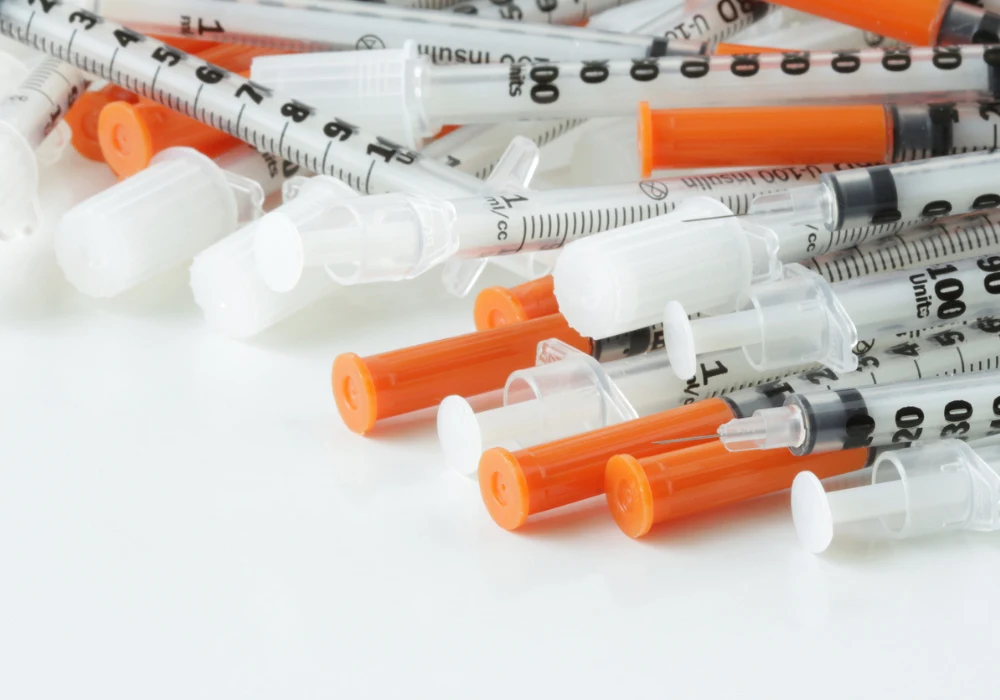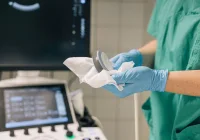Plastics reinforce safe, scalable care across hospitals, clinics, pharmacies and long-term care yet the sector’s heavy dependence on single-use items now drives rising waste, emissions and costs. In Europe and North America, seven product groups dominate consumption and disposal, locking systems into linear flows that are misaligned with climate and resource goals. A recent sector-wide analysis outlines the scale of this challenge and models the impact of coordinated circular interventions across production, use and end of life. The findings indicate substantial opportunities to cut plastic demand, reduce greenhouse gas emissions and lower total system costs while maintaining patient safety. They also identify the structural barriers slowing progress and sets out enabling actions to move from fragmented pilots to sector-wide change.
Scale and Trajectory of Single-Use Plastics
Single-use plastics are embedded across care pathways from gloves and gowns to syringes, tubing, device packaging, wipes and pharmaceutical packs. In 2023, Europe and North America generated about 2.1 million tonnes of single-use plastic waste from seven high-volume categories and approximately 9.3 million tonnes of CO₂e across the value chain with costs of about €51.5 billion. Without systemic action, annual waste and associated emissions could rise by 35–40% by 2040 with total costs exceeding €70 billion a year under a Business-as-Usual pathway.
The seven product categories modelled are tubing and fluid bags, gloves, rigid devices such as syringes and sample containers, rigid medical device packaging, personal protective equipment, wipes and pharmaceutical packaging. The scope focuses on hospitals and clinics, medical practices and blood donation centres with a regional lens on EU27 plus the UK and the United States plus Canada. Product selection prioritised high plastic volumes, single-use application, medical purpose and data availability across both geographies.
Regional trajectories underscore different paces of growth without intervention. In North America, waste, emissions and costs are each projected to increase by 28% by 2040 from 1.24 million tonnes of waste and 4.3 MtCO₂e in 2023 to higher levels under Business-as-Usual. In Europe, growth is steeper with waste, emissions and costs each rising by 47% by 2040 from a 2023 baseline of 0.9 million tonnes of waste and 5 MtCO₂e. Upstream processes dominate costs in both regions, reflecting the purchase price and plastic production and conversion stages.
The analysis links current trajectories to four structural forces: the cost competitiveness of virgin plastic, regulatory and performance standards that favour single-use formats, rising healthcare demand across settings and fragmented responsibility for sustainability decisions. Together these forces consolidate a linear model that strains local waste systems and diverges from climate targets.
Circular Levers and Modelled Impact
A coordinated suite of five circular levers can shift the system: Refuse, Rethink, Reduce; Reuse; Substitute materials; Improve recycling and Procure low-GHG emissions plastics. These interventions act across the value chain from product design and procurement to clinical use and end-of-life management. The modelling indicates that deploying the levers at scale could reduce single-use plastic waste by up to 53 %, avoid up to 7 MtCO₂e annually and lower system costs by up to 24 % by 2040, equivalent to about €16.6 billion in annual savings compared with Business-as-Usual. Upstream measures deliver most of the impact, highlighting the priority of avoiding or reducing plastic demand before treatment.
Regional scenarios mirror these gains. In North America, a High-Ambition pathway cuts disposed waste by 54%, total system emissions by 58 % and costs by 21% by 2040 relative to Business-as-Usual. A Moderate-Ambition pathway delivers smaller but still material reductions with most benefits arising from upstream avoidance and redesign.
In Europe, a High-Ambition pathway halves disposed waste and emissions while reducing costs by about 26% by 2040 versus Business-as-Usual. As in North America, upstream levers contribute most of the mass reduction, particularly through Refuse, Rethink, Reduce supported by targeted substitution, reuse where safe and feasible, better design for recyclability and procurement of lower-emissions plastics where single-use remains necessary.
The product focus areas reflect where volume and intervention potential are the greatest. Fluid bags and tubing, gloves, rigid devices and packaging together account for most single-use plastic mass in both regions, offering significant opportunities through reduction of unnecessary use, redesign for durability or recyclability and end-of-life improvements for non-infectious streams. The modelling boundaries consider single-use plastic mass flows and do not include the mass of durable items introduced by reuse, maintaining a consistent lens on single-use plastics.
Barriers and Enablers for System Change
Despite the availability of solutions, seven system barriers slow uptake: fragmented governance and siloed decision-making, data gaps on materials and waste, short-term cost focus over lifecycle value, regulatory inertia and misaligned incentives, weak demand signals that limit supplier investment, behavioural norms shaped by infection control and time pressure and infrastructure and funding gaps for segregation, logistics and processing. Addressing these barriers in parallel is necessary to unlock durable system-wide progress.
The analysis highlights foundational capabilities to enable change. Clear accountability within providers is essential with defined responsibilities for circularity across procurement and operations and cross-functional coordination to scale successful pilots. Data infrastructure should support product-level tracking of plastic use, procurement patterns and waste flows to inform targeted decisions and transparent performance management. Embedding value-based procurement criteria that reflect lifecycle emissions, waste implications and material circularity can send early, consistent signals to manufacturers to redesign products and packaging. Clinical and operational teams benefit from training and decision support that integrate circular options into safe workflows, while waste service providers can expand decontamination and recycling capacity for appropriate non-infectious streams. Policy can accelerate progress through updated waste and product regulations, support for innovation and financial mechanisms that reward circular outcomes.
Must Read: Surgical Devices: Safety, Cost and Sustainability
Decisions taken in the near term on product design, procurement frameworks and infrastructure will set trajectories for years. With many institutions already trialling reuse, packaging redesign and hard-to-recycle recovery, the priority is coordination, scale and alignment across public and private actors to match ambition with implementation.
Healthcare’s plastics system is at an inflection point. Left unchanged, Europe and North America face rising volumes of single-use waste, higher emissions and escalating costs through 2040. The modelling shows that a coordinated set of circular levers can halve waste and emissions and reduce total costs with upstream avoidance delivering the largest gains. Realising this potential depends on tackling structural barriers and investing in enabling capabilities across governance, data, procurement, clinical practice, infrastructure and policy. The pathway is actionable and evidence-based, offering healthcare leaders a route to align material flows with climate and resource goals while safeguarding patient care and strengthening system resilience.
Source: Systemiq
Image Credit: iStock










